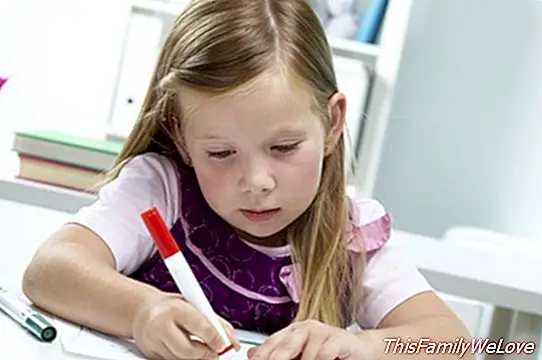Evolution of children's drawing

Stripes, circles and zig zags are the strokes that make up the scribbles of children. As babies grow, opportunities to play, draw, learn to talk, walk specifically appear in them. drawing becomes a fundamental source of expression for children. The evolution of children's drawings goes through a series of stages directly related to the child's age.
We can not determine exactly when and how children begin to draw, because that depends on multiple factors, such as the nursery setting, parent stimulation, or materials that may be at hand. Although we can not know when they will start draw your first strokes, yes we can analyze the three first phases of children's drawing.
The phase of uncontrolled scribbling
This phase is the first of all, which children begin to develop when they have 18 months until approximately two years. With this age, children do not have a fine control over their motor activity, hence these drawings are the product of uncontrolled movements of your hand. It is common for them to get out of the sheet or that their lines are either very strong or very weak.
Children they do not show their willingness to draw a concrete picture, it is simply something that amuses them but they do not understand very well what it is to draw. They choose colors at random, picking green or orange is indifferent to them.
The phase of the controlled doodle
After two years, children already have more control over their motor activity. The strokes they make with their hand are more precise and begin to take concrete forms. The child has visual control of his drawing, pretends to represent a thought or something he has seen.
Your goal is to express something determined, that's why when they finish they usually say, it's a house or it's a car, although at first glance it does not look like it. It is also normal for them to start by saying that they are going to draw a sun and in the end it becomes a tree.
The child enjoys drawing and drawing, begins to understand what it means to draw and gives a particular purpose to his drawing.
The phase of the named scribble
At 3 or 4 years, the child has greater control of his graphomotor skills. The strokes have evolved, and the vertical, horizontal stripes and circles are more precise.
Their representations begin to be more recognizable. Gone are those rampant strokes in which the children came out of the sheet of paper. He begins to choose concrete colors, blue for water, yellow for sun, and names his representations.
He knows that his drawing is a form of expression and seeks the reaction of adults, that is why it is very important that we do not say things like "it does not look like anything" or "this is not done", because they suppose a demotivation so that the child continues practicing such an important activity for his emotional and intellectual development as is the drawing.
Marisol Nuevo Espín
It may interest you:
- 6 keys to interpret children's drawings
- Children's drawing, a tool for family communication
- Creativity in the development of children
- Ideas to enhance creativity at home




